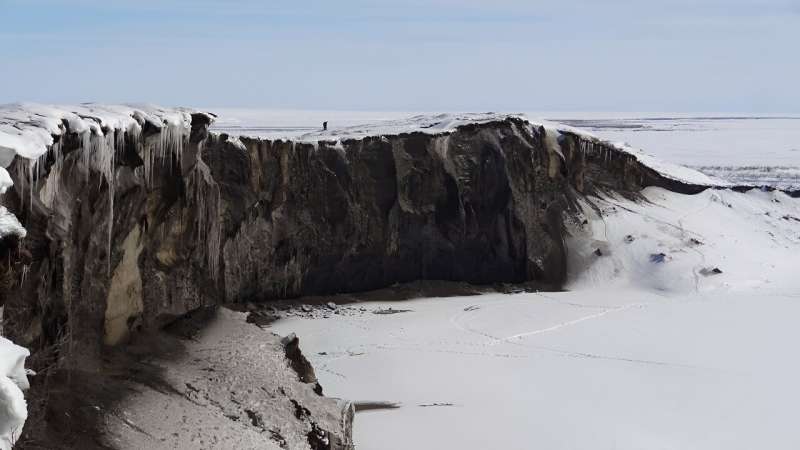This article has been reviewed according to Science X's editorial process and policies. Editors have highlighted the following attributes while ensuring the content's credibility:
fact-checked
trusted source
proofread
Source or sink? A review of permafrost's role in the carbon cycle

Permafrost, or ground that is frozen for two or more years, stretches over about 14 million square kilometers in the Northern Hemisphere, 15% of the hemisphere's land area. Cold temperatures limit the decomposition of organic material, making permafrost soils a significant carbon sink. But warming temperatures from climate change are thawing permafrost and allowing microbes to decompose stored carbon. The result is a release of greenhouse gases, creating a feedback loop that further drives warming climate conditions.
Scientists have researched the many factors affecting permafrost and its role in carbon cycling, including vegetation changes, periods of freeze and thaw, wildfire, and other disturbance events, for the past 20 years. In a new review paper published in the Journal of Geophysical Research: Biogeosciences, Treat, et al. looked at the breadth of knowledge on the topic to understand better how permafrost's change from carbon sink to carbon source in the Northern Hemisphere might affect climate goals.
The team concluded that terrestrial permafrost regions in the Northern Hemisphere remain a small net carbon dioxide sink overall. But wetland permafrost regions, especially in Eurasia, show high methane emissions. They also noted that there are lower carbon dioxide uptakes in higher latitudes, with the strongest sink located in western Canada.
The authors note that there are changes in greenhouse gas amounts depending on the type of modeling used and the density of data available. To calculate carbon balances at a regional level, they suggested continued and coordinated field and sensor data collection. The researchers also concluded that improved maps and models, accompanied by year-round carbon dioxide and methane measurements in more areas, would improve the overall accuracy of carbon flux measurements for permafrost regions.
More information: Claire C. Treat et al, Permafrost Carbon: Progress on Understanding Stocks and Fluxes Across Northern Terrestrial Ecosystems, Journal of Geophysical Research: Biogeosciences (2024). DOI: 10.1029/2023JG007638
Provided by American Geophysical Union
This story is republished courtesy of Eos, hosted by the American Geophysical Union. Read the original storyhere.




















